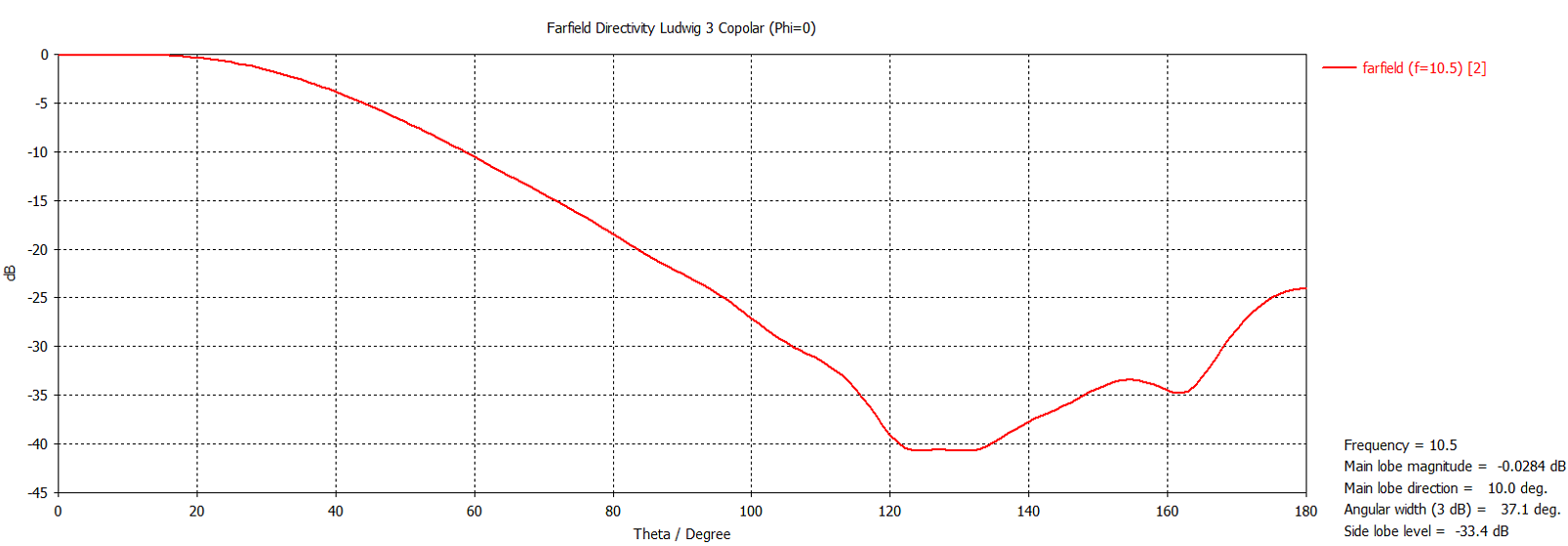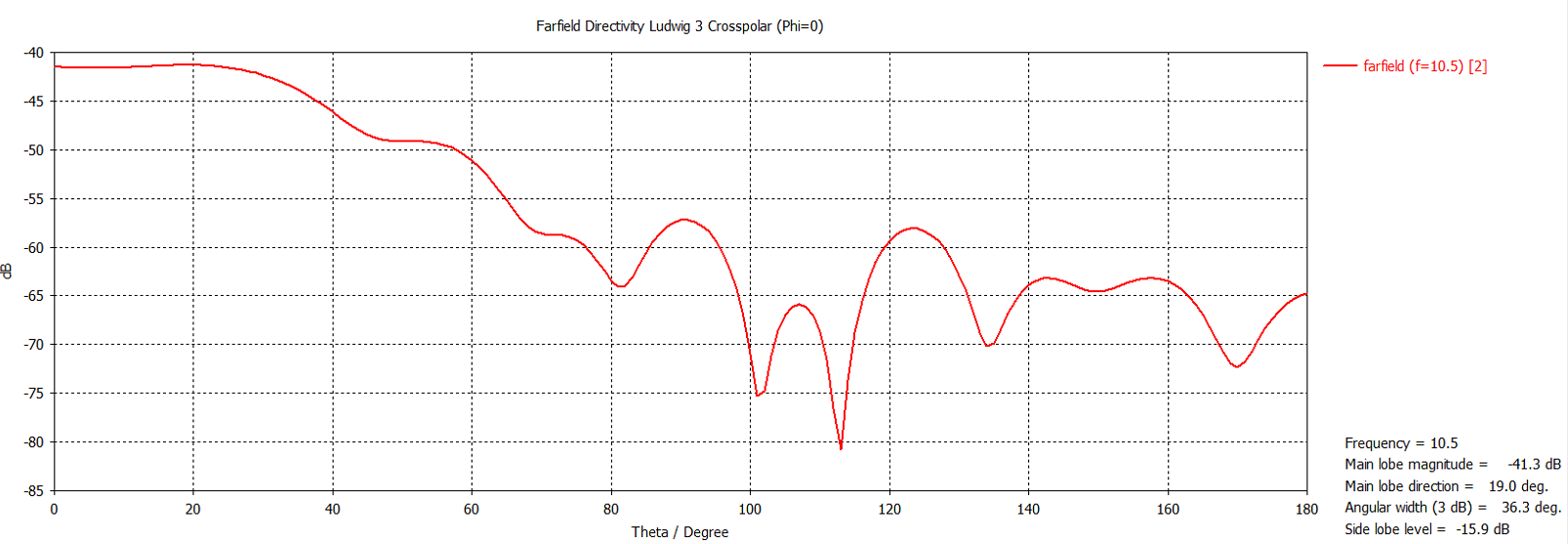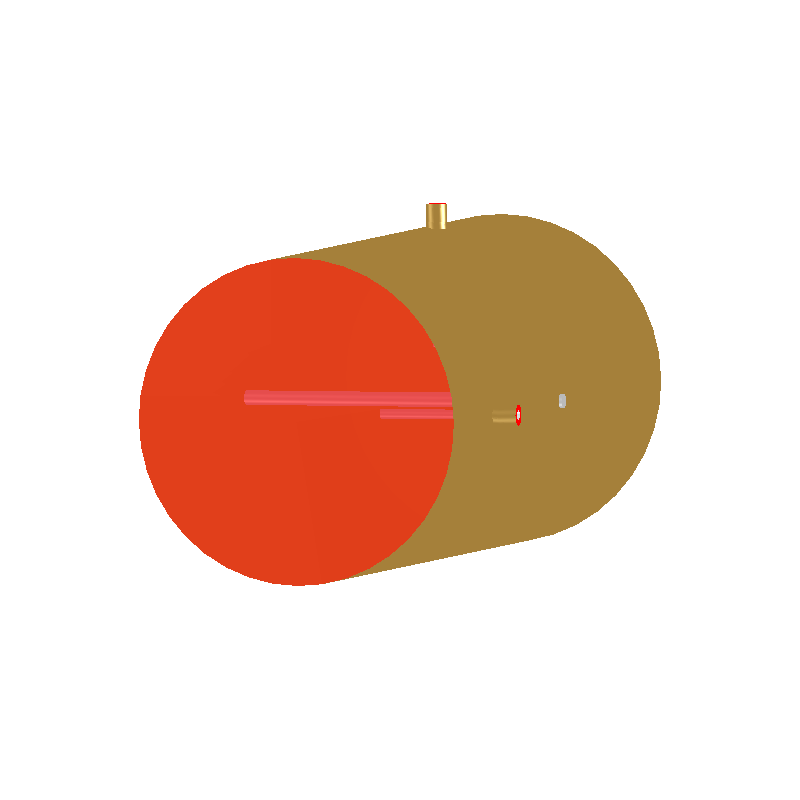10GHz Corrugated Horn Antenna Design Problem
S11 and S22 < -12dB
S21 and S12 < -30 dB
XPD better than 35dB
After manufacturing the Horn antenna, the S- Parameters are according to simulation but the radiation pattern (and XPD) are not according to the design. I will try to explain better.
The simulation report a radiation pattern of 90-100o @10dB. The measured one report 45o @ 10dB. The XPD measured is different for each port of the horn (I do not understand why because the design of the horn is the same).
Simulated co-polar radiation pattern:

Simulated Crosspolar radiation pattern:

H-Cut Horn antenna measures:
I would like to know if there is any parameter or a properties for the simulation in order to take into account the corrugation of the antenna because the simulation seems the same with and without the corrugations. I do not know exactly what could be the problem.
I think I am not making the farfield simulation properly. I have tried to change boundary and the distance for the simulation but the results are always the same.
Hi WGabrielRF,
You may be exciting unwanted modes in the antenna. Are your feed networks the same in simulation and experiment?
where is your port ? are you using slow wave structure(such as corrugated waveguide) for obtaining polarization or septum polarizer?What is your axial ratio? If you haven't done the whole system simulation but only the feed your problem might be at the polarization structure. If you have a really big axial ratio maybe you should look at E-cut of the feed aswell.
Hello,
I am designing a horn circular corrugated antenna (chaparral type). The feeding is with coaxial cable (SMA). I have two perpendicular ports, for each linear polarization. I have check the feeding structure of the horn and I do not have higher modes (they are too low in simulation). Feeding structure is similar as shown in the following picture:

According to the axial ratio. CST simulation shown over 35dB but when measure, the real shown around 15dB.
I have check some papers about chaparran antenna and the final radiation pattern do not have high side lobe, but i have in the measure. Could it be a measure error? Maybe in the setpup or any intereference during the measure that alter the radiation pattern and makes surfaces in the external rings of the horn and makes surface current along the rings and side lobes level increase?
Cross Polar Discrimination (XPD) measurements are very sensitive to multipaths. Signals from unwanted paths should be at least 30dB down from the main path.
The test measurement environment should be free of reflectors or objects that can produce signal multipath.
For this type of measurements most of the normal anechoic chambers doesn't work properly if they are not designed for mmWave frequencies.
Multipath or other interference would modify also the radiation pattern as much as the difference between the simulation and the measure (side lobe levels and Beamwidht)?
For example a relative small metal object placed in the reactive near field of an antenna it will affect the antenna pattern (including side lobes and beamwidth), but if is placed in the far field its influence could be negligible.
The XPD measurements would be affected if the small metal object placed in the far field create reflections with amplitudes mentioned above.
You might have a measurement error as well if you are not using a professional setup. Happened to me once where the controller unit showed 60 degrees but actually it turned the motors 90 degrees. so the radiation pattern worth of 180 degrees were crammed in 120 degrees.
Thank you for all your answer.
I have been making some test. The measure in the anecoic chamber is in near fild and then, the conversion made to farfield, that means there is no multipath. IN the other hand, we have cheack the set-up and repeated it for other probes antennas where the obtained results is the same as the provided by the manufactured.
In addiction, we have use this horn antenna in order to feed a parabolic antenna. With this antenna I have made a "quick" measure checking that the maximum Power - minimum power measured at the antenna port rotating the horn antenna is 11-12 dB. i know this is not the best way to check XPD value, but this quick measure should give an difference near simulation (may be 25 - 30 dB) but the resoults are quite worse.
I don't know what I have to check. Is possible there is any parameter in the simulation that makes this a wrong design? I have cheqcked material, phase center, polarization port, mesh simulation, symmetry, boundary condition, accuracy... etc. I don't know what else. May be anyone could help me if i send him the cst or the 3D file.
Best regards
